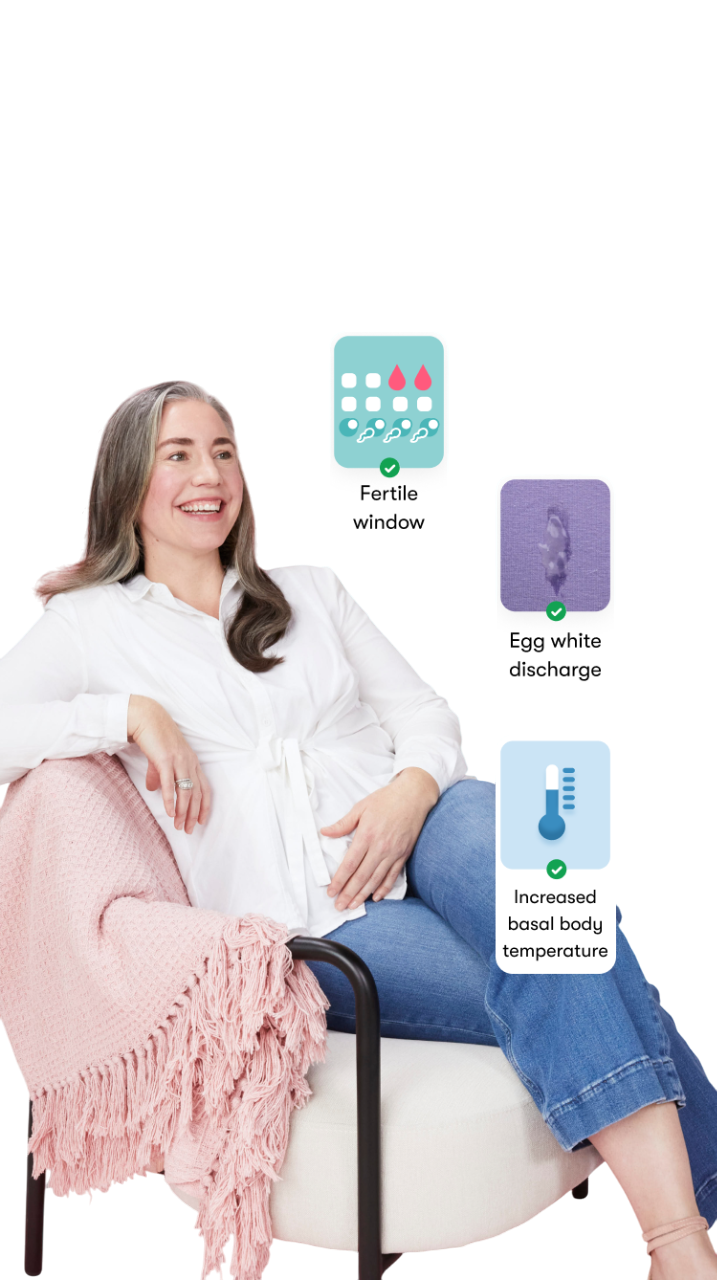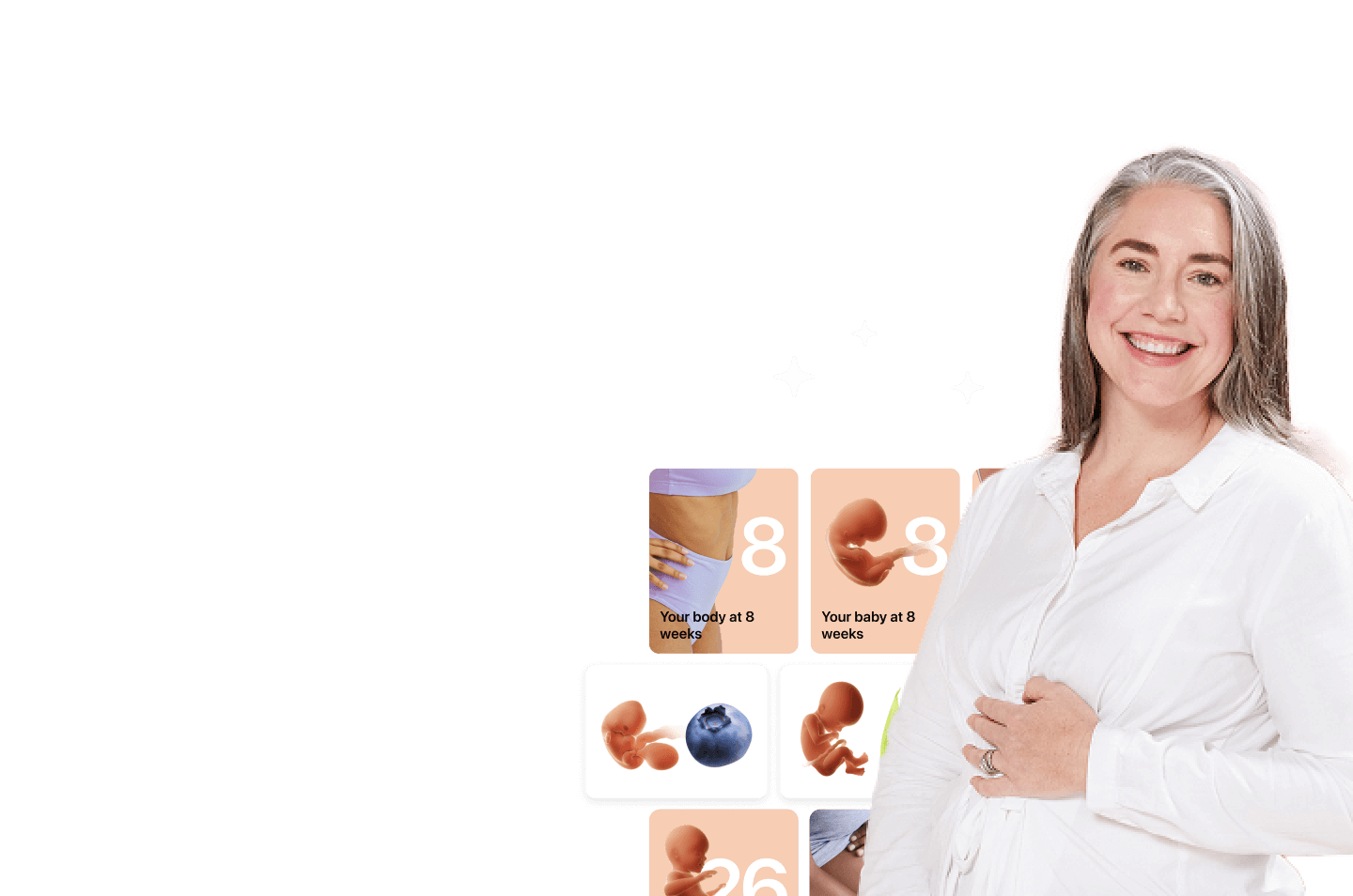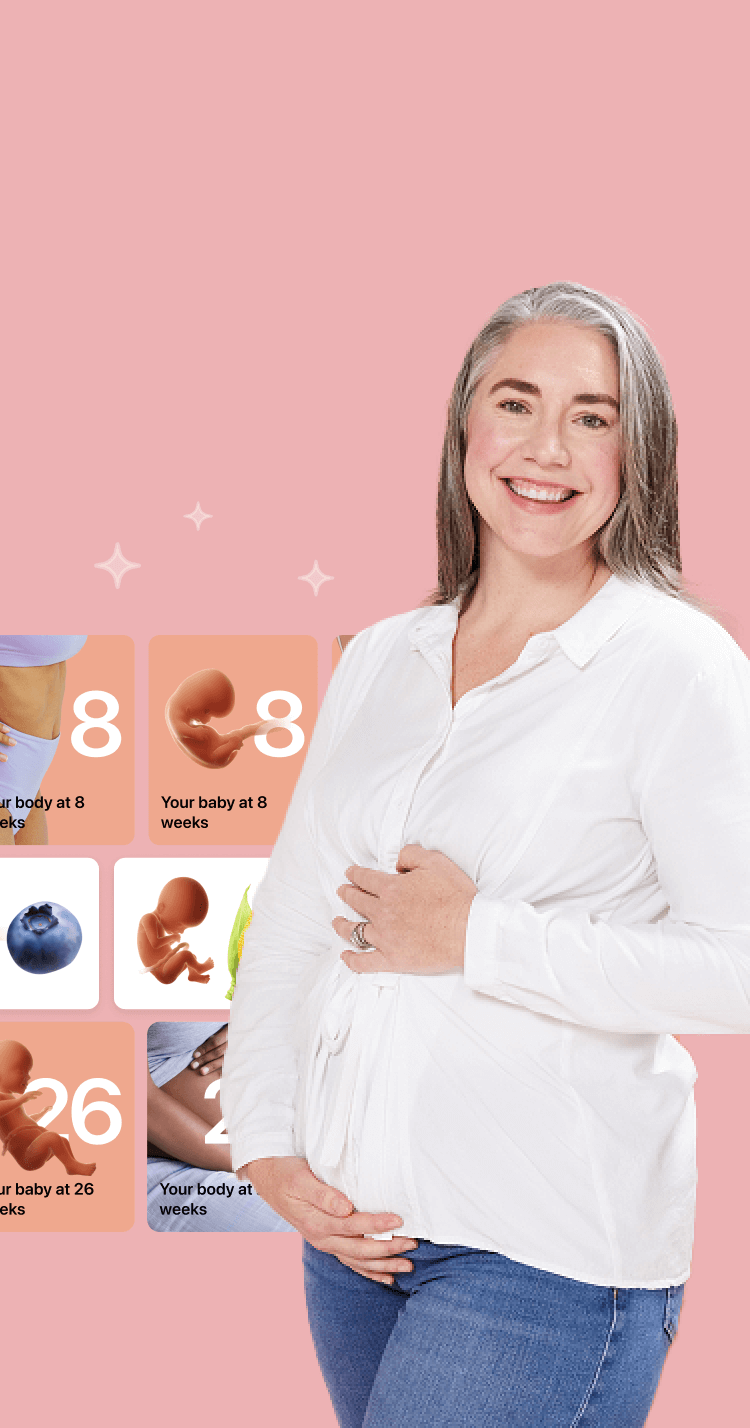As you reach the end of the 2nd trimester, 6 months pregnant can feel like a major turning point. Find out about your baby’s development and the symptoms to expect during this time with advice from a Flo expert.
-
Tracking cycle
-
Getting pregnant
-
Pregnancy
-
Help Center
-
Flo for Partners
-
Anonymous Mode
-
Flo app reviews
-
Flo Premium New
-
Secret Chats New
-
Symptom Checker New
-
Your cycle
-
Health 360°
-
Getting pregnant
-
Pregnancy
-
Being a mom
-
LGBTQ+
-
Quizzes
-
Ovulation calculator
-
hCG calculator
-
Pregnancy test calculator
-
Menstrual cycle calculator
-
Period calculator
-
Implantation calculator
-
Pregnancy weeks to months calculator
-
Pregnancy due date calculator
-
IVF and FET due date calculator
-
Due date calculator by ultrasound
-
Medical Affairs
-
Science & Research
-
Pass It On Project New
-
Privacy Portal
-
Press Center
-
Flo Accuracy
-
Careers
-
Contact Us
6 months pregnant: Development and what to expect


Every piece of content at Flo Health adheres to the highest editorial standards for language, style, and medical accuracy. To learn what we do to deliver the best health and lifestyle insights to you, check out our content review principles.
By 6 months, you’ve passed the halfway mark in pregnancy, and you’ll likely continue to see some pretty monumental changes in both you and your baby. You might still be processing your 20-week anatomy ultrasound scan. This was an opportunity for your doctor to check how your baby is growing, and you might have found out their sex. This is a major milestone for many parents-to-be.
You might have also seen some pretty big changes in your 6 months pregnant belly. Everyone’s belly can look slightly different, but you might have “popped” by 6 months. Every pregnancy is unique, but you might start to feel slightly different at this point in your 2nd trimester. Pregnancy nausea and vomiting (also known more colloquially as morning sickness) may be long gone, replaced with newer aches.
So, what kinds of developmental changes are in store for you and your baby this month? Keep reading to find out about fetal development at 6 months pregnant, with advice from Flo expert Dr. Renita White, obstetrician and gynecologist, Georgia Obstetrics and Gynecology, Georgia, US.
You can also learn about your pregnancy week by week by downloading a pregnancy-tracking app like Flo.
Key takeaways
- Your baby starts rapidly gaining fat this month, helping to make its skin smoother and less wrinkly. They will also start responding to noises from the outside world and making more definite movements inside you.
- From 24 weeks pregnant, your pregnancy will officially be considered viable. This means that with the right support, your baby could survive outside the uterus if you were to go into very early labor.
- A lot of people report feeling more energetic and feeling better throughout the 2nd trimester, although symptoms like ligament pain and leg cramps are common.
Take a quiz
Find out what you can do with our Health Assistant
Fetal development between weeks 23 and 27 of pregnancy
Like the weeks that have passed in your pregnancy, there’s a lot going on during your 6th month for both you and your baby. “During the 6th month of pregnancy, the baby is starting to add more body fat, and the weight gain leads to the skin becoming less wrinkly,” says Dr. White. “The eyelids are fused closed at this point but will start to open.”
It’s a big month for your baby bump, too, as your doctor will start measuring your belly to estimate the size of your baby. “You will be showing by this point for sure,” says Dr. White. “A health care professional will be measuring the fundal height at each appointment by this point. This is where they measure from your pubic bone to the top of the uterus. This measurement should correspond with the number of weeks you are. So, for example, if you are 25 weeks pregnant, your fundal height will measure about 25 centimeters.” Pretty incredible, right?

Now, let’s look at how your baby is developing week by week during the 6th month of pregnancy.
Week 23
At 23 weeks pregnant, your baby is rapidly gaining body fat. Since many of the crucial organs and structures are developed, this means your baby will get bigger and less wrinkly. You might also notice that your baby has started having hiccups. This can feel like a rhythmic, jerky movement inside your belly.
Week 24
At 24 weeks pregnant, your pregnancy is now considered viable, which means there is between a 68% and 73% chance your baby could survive outside the uterus with the right support. You may find this scary to think about or reassuring, depending on which way you look at it. Either way, know that it’s very unlikely your baby would be born right now, as extremely preterm babies are rare.
This week, your baby’s finger and toe prints are growing. By the end of month 6, they’ll be fully developed. They are also beginning to respond to noises from the outside world. This means it could be a good time to start chatting with your bump, reading to it, or playing music to it if you haven’t been already. One study found that babies paid attention to their mother’s voice while in the uterus. This may help you and your loved ones build a bond with the baby.
Week 25
You may notice your baby moving about a lot at 25 weeks pregnant, and a loud noise may now make the baby jump or kick. This is all thanks to their startle response, a reflex that you’ll become very familiar with once they are born and that will disappear by the time they are four to six months old.
Meanwhile, your baby is now peeing into the amniotic fluid that surrounds them. The water-like fluid is actually in constant circulation in and around your baby as they continually drink it in and pee it out. This might sound gross, but amniotic fluid is pretty incredible, full of nutrients, hormones, and antibodies that keep your baby healthy.
Week 26
Your baby’s lungs change in a pretty big way at week 26. They start producing a substance called surfactant. This has the important job of preventing their air sacs from collapsing and sticking together when they deflate.
Your baby is also able to open their eyelids around now. Plus, at 26 weeks pregnant, they start producing melanin, which is the substance that gives their eyes and skin their color.
While it’s common for babies to have blue eyes when they are born, they don’t always — that’s just a myth. One study found that, actually, 63% of babies have brown eyes at birth.
The shade they are born with may or may not change, and their permanent eye color will be based on genetics. Interestingly, eye color genes can skip generations, so you may be surprised to find your baby has a different eye color from their parents!
Week 27
Twenty-seven weeks pregnant marks the final week of the 2nd trimester, which can feel like a huge moment in your pregnancy journey. Your baby is now the size of a cauliflower and weighs around 1 kg.
This week, your baby continues gaining weight, which smoothes out their once wrinkly skin, and their heart rate will be around 110 to 160 beats per minute. This is a sign of your baby’s maturing parasympathetic nervous system, aka the system responsible for making the body relax.
Symptoms you might experience when 6 months pregnant
You might continue to have more energy throughout your 2nd trimester, and it might seem like your baby feels the same. This month, you might begin feeling stronger, more definite baby kicks, which can help you bond with your baby.
“The movements no longer feel like flutters,” says Dr. White. “They are typically stronger kicks that can be easily distinguished from gas. Fetal movement is felt by everyone at this point. However, the baby is still small enough that you may not feel every single movement.”

All of these developments can feel exciting, but if you’re also feeling a little overwhelmed, that’s totally fine. Your body is changing every day, and it can be a lot of information to take on. Similarly, it can be hard not to compare your experience of pregnancy at this point, but every pregnancy is different. If you’re at all worried about signs or symptoms that you are experiencing or aren’t but think you should be, don’t hesitate to reach out to your doctor.
Dr. White explains that you might notice some newer aches and pains at 6 months pregnant, and there are some common 2nd-trimester symptoms to look out for:
Round ligament pain
You can feel this type of pain in both the lower pelvis or on either or both sides of your body.
Heartburn
Pregnancy hormones can relax the valve between your stomach and esophagus, causing stomach acid to leak through and result in heartburn during pregnancy.
Leg cramps
These can often strike at night as your pregnancy progresses.
Constipation
The increase in hormones can slow down your digestive system and lead to constipation.
Bleeding gums and/or nosebleeds
These can happen due to the increase in hormones.
Breast changes
Breast changes during pregnancy can include the darkening of your areolas (the skin around your nipple) and your breasts becoming bigger.
Dizziness
Pregnancy causes changes in your circulation, which can leave some women feeling dizzy or faint.
Skin changes
You may experience changes to your skin, such as a dark line down the middle of your belly called a linea nigra.
Hemorrhoids
Increased pressure on the veins in your anus, increased blood volume, and greater chances of constipation can cause hemorrhoids.
Varicose veins: These can be caused by the increased hormones and pressure of the baby on your blood vessels.
Moving toward the end of the 2nd trimester
Your body has gone through some monumental changes this trimester, including growing your baby from the size of a peach to a cauliflower. While your symptoms might have changed at 6 months pregnant, and you might feel more energetic, it’s still incredibly important to look after yourself.
A little self-care will go a long way to keeping you feeling good this month: “Continue to get rest, exercise at least three times per week for at least 30 minutes, and drink plenty of fluids to stay hydrated,” says Dr. White.
As you begin month 7, you’ll start the 3rd trimester and the countdown to your due date. It’s an exciting time but can be overwhelming too. Flo’s pregnancy-tracking app has plenty of advice on how to get prepared for birth and manage any new symptoms. As always, if you have any concerns about your pregnancy or questions about what’s next, don’t hesitate to chat with a health care professional.
More frequently asked questions about being 6 months pregnant
How do you feel at 6 months pregnant?
“This varies for each woman,” says Dr. White. “Some people don’t feel many pregnancy symptoms, whereas others feel all kinds of symptoms. The same goes for how they feel emotionally. Some are excited and happy, whereas others are overwhelmed and struggling with anxiety around the unknown.”
How big is a 6-month pregnant belly?
“How big someone’s belly will be depends on their body type,” says Dr. White. “It’s important not to compare because it truly does depend on your own body shape. Just as the same pair of jeans fit differently on two different women, it’s common that two women at the same stage of pregnancy may be showing differently.”
How many weeks is 6 months pregnant?
The 40 weeks of pregnancy don’t fit neatly into nine months, but the 6th month of pregnancy spans weeks 23 to 27. If you’re wondering, “How many months pregnant am I?” you can find out using Flo’s calculator.


Hey, I'm Anique
I started using Flo app to track my period and ovulation because we wanted to have a baby.


The Flo app helped me learn about my body and spot ovulation signs during our conception journey.


I vividly
remember the day
that we switched
Flo into
Pregnancy Mode — it was
such a special
moment.
Real stories, real results
Learn how the Flo app became an amazing cheerleader for us on our conception journey.
References
“2nd Trimester Pregnancy: What to Expect.” Mayo Clinic, 7 Feb. 2025, www.mayoclinic.org/healthy-lifestyle/pregnancy-week-by-week/in-depth/pregnancy/art-20047732.
“20 Week Ultrasound (Anatomy Scan).” Cleveland Clinic, my.clevelandclinic.org/health/diagnostics/22644-20-week-ultrasound. Accessed 18 Feb. 2025.
“Amniotic Fluid.” Cleveland Clinic, my.clevelandclinic.org/health/body/23310-amniotic-fluid. Accessed 18 Feb. 2025.
Edwards, Christopher W., and Yasir Al Khalili. “Moro Reflex.” StatPearls, StatPearls Publishing, Jan. 2025, www.ncbi.nlm.nih.gov/books/NBK542173/.
“Eye Colors.” Cleveland Clinic, my.clevelandclinic.org/health/articles/21576-eye-colors. Accessed 18 Feb. 2025.
Curran, Mark A. “Fetal Development.” Perinatology.com, perinatology.com/Reference/Fetal%20development.htm. Accessed 18 Feb. 2025.
“Fetal Development.”Cleveland Clinic, my.clevelandclinic.org/health/articles/7247-fetal-development-stages-of-growth. Accessed 18 Feb. 2025.
“Fetal Development: The 2nd Trimester.” Mayo Clinic, 3 June 2022, www.mayoclinic.org/healthy-lifestyle/pregnancy-week-by-week/in-depth/fetal-development/art-20046151.
“Heartburn during Pregnancy.” Cleveland Clinic, my.clevelandclinic.org/health/diseases/12011-heartburn-during-pregnancy. Accessed 18 Feb. 2025.
“Hemorrhoids during Pregnancy.” Cleveland Clinic, my.clevelandclinic.org/health/diseases/23498-pregnancy-hemorrhoids. Accessed 18 Feb. 2025.
“How Your Baby Develops Week to Week.” NHS Inform, 4 Mar. 2024, www.nhsinform.scot/ready-steady-baby/pregnancy/your-baby-s-development/how-your-baby-develops-week-to-week/.
Marx, Viola, and Emese Nagy. “Fetal Behavioural Responses to Maternal Voice and Touch.” PLOS ONE, vol. 10, no. 6, 8 June 2015, https://doi.org/10.1371/journal.pone.0129118.
Morgan, Andrei S., et al. “Management and Outcomes of Extreme Preterm Birth.” BMJ, vol. 376, 10 Jan. 2022, doi:10.1136/bmj-2021-055924.
“Newborn Reflexes.” Cleveland Clinic, my.clevelandclinic.org/health/articles/23265-newborn-reflexes. Accessed 18 Feb. 2025.
“Newborn Reflexes.” Stanford Medicine Children’s Health, www.stanfordchildrens.org/en/topic/default?id=newborn-reflexes-90-P02630. Accessed 18 Feb. 2025.
“Parasympathetic Nervous System (PSNS).” Cleveland Clinic, my.clevelandclinic.org/health/body/23266-parasympathetic-nervous-system-psns. Accessed 18 Feb. 2025.
“Pregnancy Constipation.” Cleveland Clinic, my.clevelandclinic.org/health/diseases/21895-pregnancy-constipation. Accessed 18 Feb. 2025.
Qattea, Ibrahim, et al. “Survival of Infants Born at Periviable Gestation: The US National Database.” The Lancet Regional Health: Americas, vol. 14, Oct. 2022,
“Round Ligament Pain.” Cleveland Clinic, my.clevelandclinic.org/health/symptoms/21642-round-ligament-pain. Accessed 18 Feb. 2025.
Santo, Susana, et al. “Agreement and Accuracy Using the FIGO, ACOG and NICE Cardiotocography Interpretation Guidelines.” Acta Obstetricia et Gynecologica Scandinavica, vol. 96, no. 2, Feb. 2017, pp. 166–75, doi:10.1111/aogs.13064.
“Pregnancy: Second Trimester.” Cleveland Clinic, my.clevelandclinic.org/health/articles/16092-pregnancy-second-trimester. Accessed 18 Feb. 2025.
“Varicose Veins While Pregnancy.” Cleveland Clinic, my.clevelandclinic.org/health/diseases/23331-varicose-veins-in-pregnancy. Accessed 18 Feb. 2025.
“You and Your Baby at 24 Weeks Pregnant.” NHS, www.nhs.uk/pregnancy/week-by-week/13-to-27/24-weeks/. Accessed 18 Feb. 2025.
“You and Your Baby at 25 Weeks Pregnant.” NHS, www.nhs.uk/pregnancy/week-by-week/13-to-27/25-weeks/. Accessed 18 Feb. 2025.
“Your Baby’s Movements.” NHS, www.nhs.uk/pregnancy/keeping-well/your-babys-movements/. Accessed 18 Feb. 2025.
Marnach, Mary. “What Is a Fundal Height Measurement? Why Does It Matter?” Mayo Clinic, 7 Mar. 2024, www.mayoclinic.org/healthy-lifestyle/pregnancy-week-by-week/expert-answers/fundal-height/faq-20057962.




